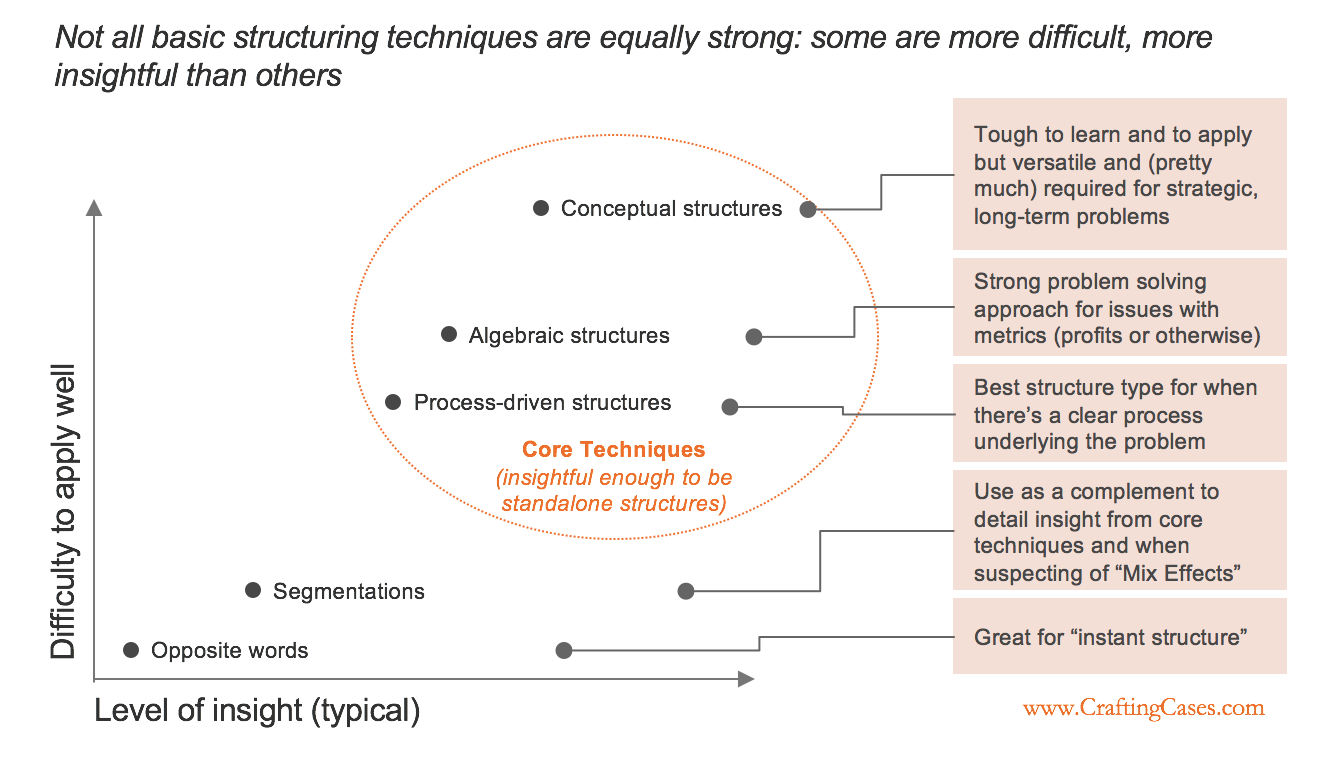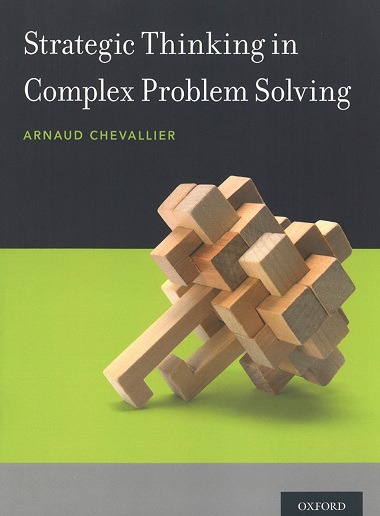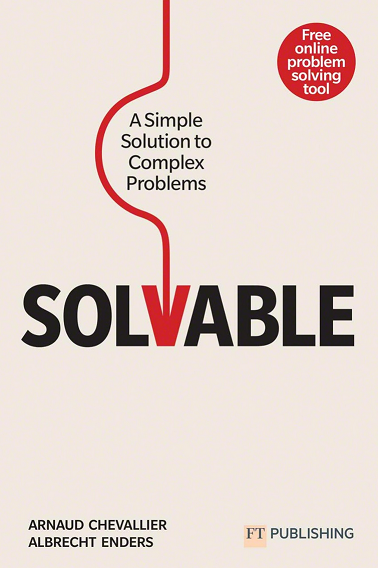MECE Issue Trees
Definition
A MECE Issue Tree is a diagram showing a tree-like breakdown of a question into multiple levels of answers. Each question is answered by "issues" that are Mutually Exclusive, Collectively Exhaustive (MECE). If each level of answers is MECE, then the tree has correctly searched the entire issue space, down to the lowest level of issues, where (for WHY trees) the detailed root causes that can be resolved may be found. A root cause is resolved by changing something in the system, such that the negative symptoms caused by that root cause are eliminated or reduced to the point of being acceptable.
MECE Issue Trees are especially useful for solving highly complex system problems, where the potential root cause space is so vast that searching it completely and efficiently requires the right tool for the job. MECE Issue Trees are so effective they are the primary problem solving tool for the world's top three management strategy consultancies: McKinsey, Bain, and BCG.
Examples of WHY and HOW trees
The two main types of trees are WHY and HOW trees. A tree is built by asking questions. When doing root cause analysis, the questions are WHY , such as "Why won't my car start?" An example of a WHY tree is shown below:

Once a root cause if found, attention shifts to how can it be resolved by solution elements. For finding solutions, the questions are HOW questions, such as "How can I find my lost phone?"
In the above tree we have added two example leaf root causes. These are root causes at the end of a tree branch that are detailed enough to be resolved, so you stop digging deeper. Suppose the analysis team decided that root cause A could be realistically resolved with the right solution elements.
This leads to a second type of MECE Issue Tree, where one asks HOW instead of WHY. A HOW tree example is shown below. Note that the starting HOW question is trying to find solutions for root cause A.
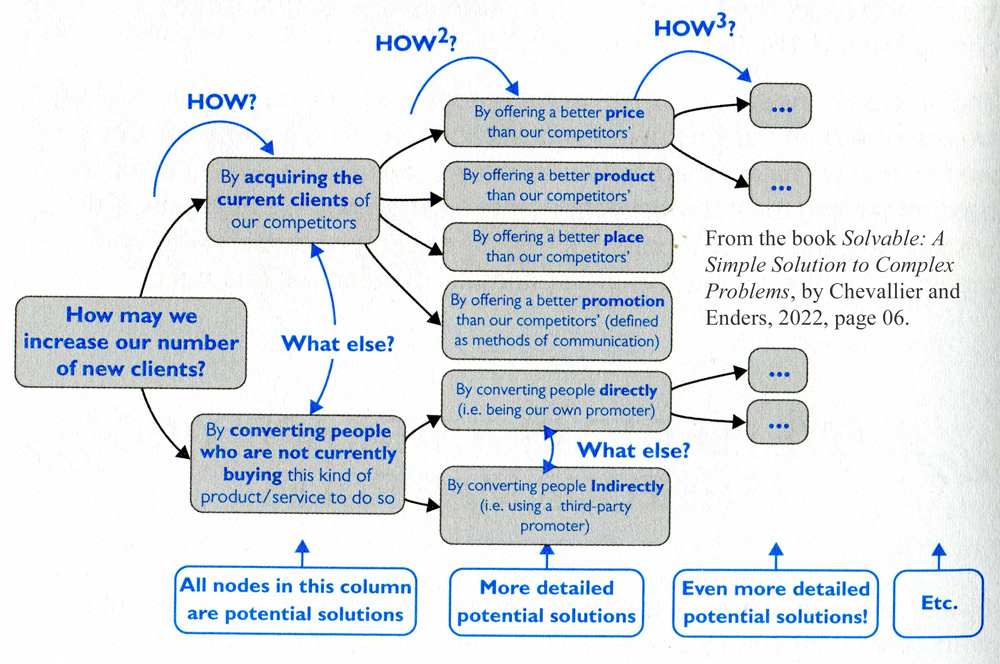
Mutually Exclusive, Collectively Exhaustive (MECE)
The fundamental rule for building a MECE Issue Tree is to be sure that each set of answers (issues) to a question is MECE. If not, your analysis is flawed and will probably lead you astray.
Mutually exclusive means there is no overlap between issues. This results in clear, distinct, well-defined issues.
Collectively exhaustive means the issues cover ALL possible answers to the question. There are no gaps in the issue space. All alternatives have been included.
Issue Frameworks
MECE Issue Trees have been so widely used that issue frameworks for outlining a set of issues have been developed. An issue framework is a pattern (aka template) that if followed correctly ensures a set of answers is MECE, to various degrees.
Bruno Nogueira, business analyst with McKinsey and Company, classifies issue frameworks into five basic types as shown below: (image from this article)
We have reordered the 5 types of frameworks from tightest to loosest, in terms of the probability of a framework resulting in a fully MECE set of issues. The first two are airtight. The third is potentially airtight. The fourth and fifth are inherently loose, as we will explain.
1. Opposite words - For example, something is too high or too low, direct or indirect, etc. This is the simplest issue framework to understand and apply correctly, and is very common. The WHY tree contains 3 examples of opposite words. The HOW tree contains 2 examples. (article about opposite words)
2. Math equations (aka algebraic structures) - Here a math equation is used to define a set of issues. For example, "HOW can we increase profits?" The answers are "By increasing sales." and "By decreasing expenses." This is because Sales - Expenses = Profits. This is a very tight framework because math itself is tight. (article)
3. Segmentation - Here the issue space is physically segmented into MECE issues. For example, in the above tree one set of segmented issues is "Customers who drink 0 to 1 cups/day", 1 to 2 cups, 2 to 3 cups, and more than 3 cups. This framework is not always airtight, as are the first two framework types. For example, people use different size cups. A market survey asking how many cups you drink per day would not collect the exact size cup used for each person and even each drink during the day. (article)
4. Process steps - Here the question is answered by identifying the process steps something goes through. The above tree uses the example of: "A coffee capsule market share problem, for example, can be seen through the eyes of the journey your customer goes through to choose your capsules in the store. A drop in your market share should be an issue in at least one part of that process." This framework is hard to make airtight, since different people can describe the same process different ways. They can also miss important process steps. However, process steps may be the only or the best way to frame a set of issues. (article)
5. Conceptual frameworks (qualitative frameworks) - These are standard groups of issues (lists of phrases) that have proven to work on past problems. The HOW tree contains an example of this issue framework. "HOW can we acquire current clients of our competitors?" The 4 answers use the price, product, place, and promotion framework known as the Four Ps of Marketing. Countless conceptual frameworks exist. "These are categories of ideas. ... It is much harder to build a MECE list of qualitative categories than to verify if an equation adds up or if a process has all the steps, so these structures are the hardest to use." (article)
When using MECE issue trees, choose the tightest framework possible, balanced by the one that gives the greatest insights. In this article, Bruno Nogueira offers an interesting diagram showing the trade-off between difficulty of applying a framework and the level of insight gained if the optimum framework is selected and applied well. Notice how he calls them "structuring techniques" rather than "frameworks," to emphasize what they are actually doing:
The book Strategic Thinking in Complex Problem Solving, by Arnaud Chevallier, pages 72 to 74, shows 17 different conceptual frameworks. These are terrific examples for learning how to use conceptual frameworks. 5 frameworks from a figure on page 72 are shown below:
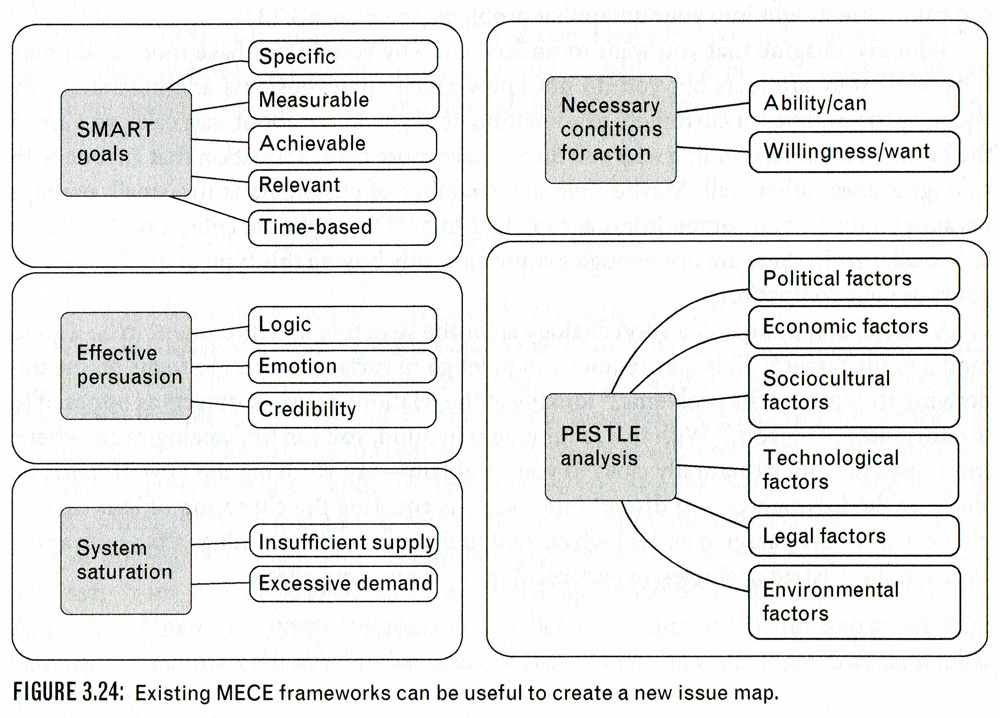
Evaluation of the Effectiveness of MECE Issue Trees
MECE Issue Trees were developed to solve difficult complex business problems. They have been in use for decades and have evolved to the point where they are the best core proceess for this class of problems, unless the analyst or organization already has a better specialized problem solving process for a particular type of problem.
However, at Thwink.org we are applying MECE Issue Trees to complex social problems. How well does the tool do there?
We really don't know yet, since we haven't yet used it on an analysis. But it appears that by using trees, we can achieve a much tighter root cause analysis (and one that is much more easily understood and accepted) than our present method, which uses the System Improvement Process (SIP). This is because SIP does not incorporate trees when identifying subproblems or building social force diagrams for each subproblem. Instead, SIP uses descriptive text to explain how this is done. No concept of MECE is used in SIP, which means an SIP analysis is relatively loose.
That's why as we do a second pass of the analysis in the paper on democratic backsliding, we will use trees as well as SIP. (This project was started in January 2023.)
An advanced technique for using trees is to use more than one framework for answering a WHY or HOW question. For example, "Why are sales so low in new product A?" That's a marketing question. The Four Ps of Marketing (price, product, place, and promotion) conceptual framework could be used. But does that give you a good starting point for all possible reasons sales are low? Not if you understand the power of formal processes. Thus, it would be beneficial to also apply a process steps framework. This would describe the steps used in the marketing process, such as market identification, product positioning, product design and pricing, product testing, and long-term product management.
But the technique of using two frameworks reveals a weakness in MECE Issue Trees. If a framework application was airtight and correct, then there would be no need to answer the same question two different ways. This shows that the potentially loose frameworks (segmentation, process steps, conceptual frameworks) cannot guarantee the answer space has been searched in a MECE manner. All a loose framework can do is help you generate creative ideas. This is an insight we've not seen discussed in the MECE Issue Tree literature, but we expect most advanced users of the tool are aware of it.
This raises a question: If a tight framework (opposite words, math equations, or a tight form of segmentation) cannot be used, then how can we tightly answer a WHY or HOW question?
Thwinking this over, we can see that difficult large-scale social system problems arise from the dynamic structure of the system. If we are asking "Why does so-and-so occur?", then to answer the question in an airtight manner may for some questions require building a simulation model of the portion of the system causing the problem. Instead of using a framework with a list of issues that might apply, we inspect the system to determine how it is actually built. This indicates a sixth type of framework is required:
6. A simulation model explaining why certain behavior occurs - If a feedback loop approach is taken, then for simple problems this can be a causal loop diagram. For more difficult problems it needs to be a system dynamics model so it can be simulated, tested, and used to evaluate different solution scenarios. In some cases it may be preferable to use a non-feedback loop approach, such as discrete events or agent based modeling, instead of or in addition to feedback loop modeling. If the model can mimic the why question symptoms reasonably closely and was built "for the right reasons," then the model will contain the root causes, since all causal problems arise from their root causes. Note this issue framework is NOT tree oriented, in terms of dividing the WHY question answers into a list of issues. It's model oriented. The issues are the nodes making up the causal structure of the model.
To summarize, MECE Issue Trees are the best core tool for analyzing difficult complex system problems, unless you already have a better tool. The tool should be supplemented with other tools as the need arises. The standard five types of frameworks are quite good, but if a problem has high dynamic complexity, then the sixth type of framework should be considered.


